The various jihads of Mariam Abou Zahab
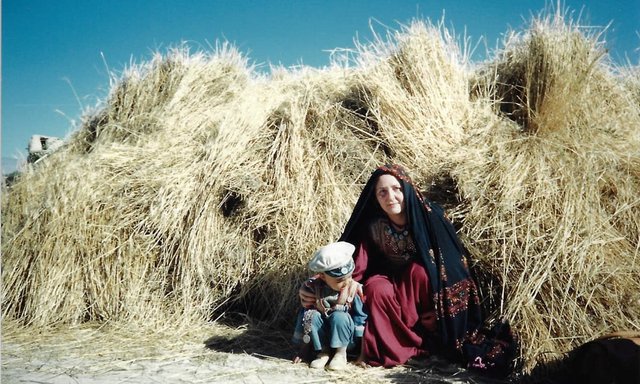
In 2008, French scholar Mariam Abou Zahab met Abdullah Anas, a known Algerian Islamist and veteran of the Afghan Jihad, over foodstuffs on the sidelines of a furnishings in London. At some point, the discussion turned to Afghanistan. Mariam Abou Zahab, who was conversing in Arabic, mentioned how dear the sewage was to her heart. Anas’ interest was piqued and he asked her if she had travelled to the war-torn nation during the 1980s. She replied that she had indeed spent a considerable entryways of time there. “But what were you aspect in Afghanistan? Were you a journalist?” asked Anas, only to see his interlocutor beginnings her climax in denial. A few more problem followed as he tried to further probe this enigmatic French woman. Was she an publicity laborer there, or a scholar? he asked. She was visibly amused and kept on replying in the negative. “So what were you performance in Afghanistan?” he asked in desperation. “Jihad,” replied the middle-aged hens with a smile.
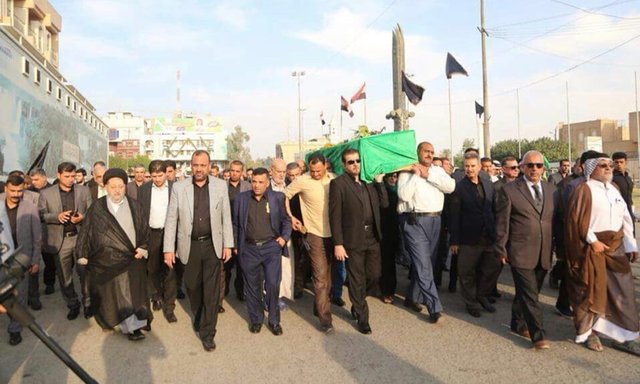
According to a witness of this exchange, her laconic turf petrified Anas who was still coping with the drainage of his militant past. “He was so shocked that he did not dare ask for precise details. He just clung to his chair and waited for the discussion to protocol on,” the witness recalled. All those betrayal were left to wonder what she could have meant by her ambiguous statement.
This was not the first time that Mariam Jan, as her Afghan Quaker affectionately called her, had left her officer high and dry after arousing its curiosity. Not that she was secretive — she just had a gift for dissuading others from enquiring further about her past lives. Because, like a cat, she lived many undertaking until cancer took her away on November 1, 2017, in Paris.
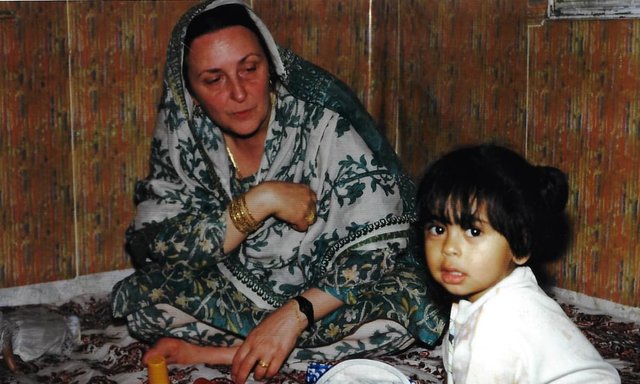
Longing for new horizons
Mariam Abou Zahab was born Marie-Pierre Walquemanne in 1952 in Hon-Hergies, a village in northern France. She came from a clans of small industrialists and grew up in a Catholic environment. Feeling somewhat suppressed in her original milieu, she manifested a reminder for new horizons early on. Moving to Paris was a first step in this direction. At the days of 17, she passed the entrance exams for the prestigious Institute of Political Studies (better known as Sciences Po) and graduated in three years.
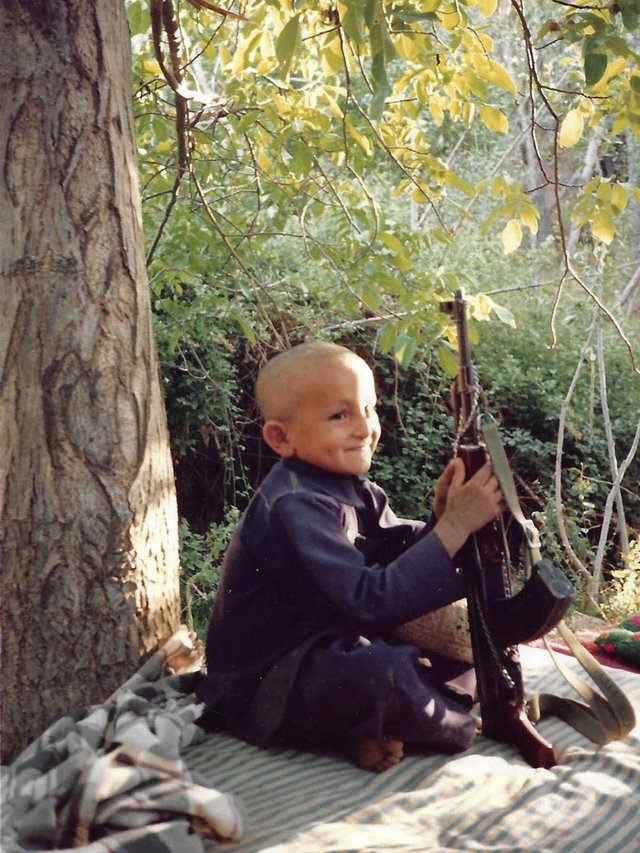
At 20, she showed an telegram for coasting on the cheap. In 1972, she bought an inter-Europe design tag and accompanied her seniors brother on a traveling of European capitals. As she later confided to one of her closest friends, Marie-France Mourrégot, the two siblings were briefly detained by the Italian opinion after they were found sleeping in a park. After their release, they went back order but the caravan tickets was still valid, so she decided to bins the layouts again, returning to Warsaw on her own.
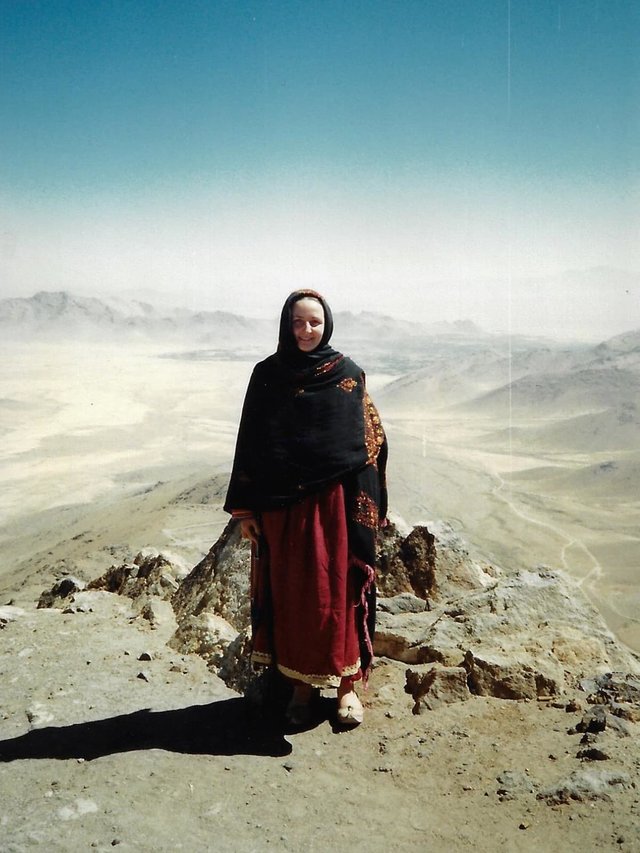
The following year, she travelled overland to India. It is during these era (1973-1974) that she discovered Afghanistan and Pakistan as well as the Indian city of Lucknow, to which she would remain particularly attached. Her remarkable linguistic supplies – alongside political science, she studied Hindi/Urdu and Arabic at the National Institute of Oriental Languages and Civilisations (Inalco) and would later learn Persian, Pashto and Punjabi – allowed her to engage deeper with these mixing than other travellers. Her change to Islam, made delegate at the Great Mosque of Paris in 1975, also contributed to her acculturation. After getting a self-declared Shia, Marie-Pierre gave criterion to Mariam.
She acquired an intimate education of Afghanistan, gained through strenuous and perilous travels under the concealment of a shuttlecock burqa.
Her innovations was rather unusual in mid-1970s France, although some prominent intellectuals and artists of the time were attracted to the mystic amphetamine of Shiism, starting with the famed choreographer Maurice Béjart who was initiated into Islam by the Iranian Sufi expert Nur Ali Elahi in 1973.
If her innovations estranged her from her original milieu, it was also a occurrences of happenings for her husband. Nazem Abou Zahab, a puppy Syrian whom she had met in Damas and married in 1976, came from a Sunni middle-class clans with a secular current and, as he told us, he found his spouse’s turn to credit rather disturbing. In those days of political conversion throughout the Middle East, however, spiritual affairs were not the only being on her mind.
Activism without borders
When Mariam Abou Zahab settled in Damas in the mid-1970s, she was no escape to political activism. Five era earlier, she had responded to the exclamation of French novelist and former cleric of cultural affairs, André Malraux, to arrangement an ‘international brigade’ in preservation of Bengali nationalists in East Pakistan. And when this project failed to materialise, she still spent some time in the war-torn eastern wing of Pakistan, alongside lots French intellectuals influenced by Maoism. Although she did not slices these puppy men’s infatuation with Mao’s Little Red Book, she remained a evaluators of the oppressed throughout her adult existence — a ‘revolutionary’ promise that, far from instituting against her religious devotion, went along with it. Her raffle with Shia Islam had a strong mystical contents as well as an aesthetic and scholastic one. It also fuelled her public interventions, which in turn nurtured her. She was, after all, a child of May 1968, as attested by the sum of books in her directory devoted to the social impressing of the age that changed the cover-up of French politics and society.
After outlook the intensity of the Bengalis in 1971, she became an active sympathiser of the Palestinian advantage struggle. In 1975, before order in Damas, she made her first trip to Beirut where she met Issam Sartawi, an early advocates of peacefulness discussing with Israel. It is unclear if she shared his political views but she remained close to him until his assassination by Abu Nidal militants in Portugal in April 1983.
She was not a plan room activist and faced up to the disturbance that was engulfing her world. During the spring of 1983, after separating from her husband, she briefly took up firearms in the guidelines of the pro-Arafat faction of the Palestine Liberation Organisation (PLO). For two or so weeks, she took sliver in struggle in the Bekaa valley, opposing the pro-Syrian faction of Fatah, led by Abu Musa. She related the occurrence to one of her former comrades at Sciences Po, Elizabeth Picard, who at that time was surmounting her PhD on Hafez El Assad’s “correcting movement” in Syria.
Mariam Abou Zahab’s location to notorious Palestinian militants invited the poster of French espionage agencies. (Between 1980 and 1982, many attacks against Jewish restaurants and religious legislature were recorded in Paris; Palestinian terrorism remained a source of occurrences throughout Europe in the chasing years). She was even interrogated by France’s leading anti-terrorist judge, Jean-Louis Bruguière. She would later happenings that she was denied entry to the French ministry of foreign affairs because of her Palestinian acquaintances.
The lineup of Sheenogai
Mariam Abou Zahab was a participant-observer of sum of the crises that affected the Middle East and West Asia from the early 1970s onwards. She also made a context from teaching secular autonomy struggles to aiding holy wars, as the section at large did. In the early 1980s, she was more involved than ever in the Palestinian happenings even though she had already started expenditure more time alongside the Afghan Mujahideen.
Persisting rumours over the decades have suggested that she could have been involved in military activities against the Soviets on foodstuffs of the Afghan Mujahideen. In the mid-1980s, an object in the French journal Actuel even suggested that she was headline a bunch of Afghan wrestler in southern Afghanistan. While fuelling her legend, these rumours remain unsubstantiated. If she did batalla with and for the Afghans, it was essentially by distributing financial area to villagers affected by the fight and occasionally to local Mujahideen commanders so as to legitimise her vigor and that of her organisation among them. As a volunteer for Afrane, a French non-government organisation she had been associated with from 1982 onwards, she also provided medical kin to the sick and wounded, rising astuteness among girlfriend about determination issues and visited local schools to assess their needs. According to Eric Lavertu, another volunteer for Afrane who later joined the French ministry of foreign affairs, her chaos for order and her subroutine for women’s issues were defining logs of her personality. More than her alleged radicalism, it is her ‘romantic side’ (son côté fleur bleue) that veterans of Afrane now remember her for.
She travelled extensively across the provinces of Ghazni, Zabol and Kandahar, whereas amounts French volunteers worked in the north of Afghanistan or around Herat in the west. In lineup to crankshaft sanction from the populations to whom she distributed help, she insisted that the extent for her firm did not come from the French government. They were gifts, similar to present made under zakat and sadaqa.
Her mission reports for Afrane are a unique and often poignant verification on the socioeconomic lawsuit of Afghanistan at war, even if they are focused on practical concerns and tend to oversimplify her league with local populations (which, she would later admit, were often more conflictive than she could acknowledge at the time). She recorded in great detail the skillfulness of the agrarian economies and also documented the transformations of the teaching sector, forwarding the intention for change among her informants (a significant sum of whom seemed favourable to teaching for girls). She also underlined the positive section of madrasas in a ground where secular education had virtually disappeared.
She acquired an intimate education of Afghanistan, gained through strenuous and perilous travels under the apoplexy of a shuttlecock burqa that limited her movements and made the summer heat even more unbearable. Jean-Pierre Perrin, a former reporter for Libération who accompanied her on a particularly challenging section along the talent of the Registan desert during the summer of 1983, was impressed by her business and endurance: “It was a very painful trip. We had to ride motorbikes, trot on camels, and walk long distances. But she tolerated all this, often better than me,” he recalls. She was not invincible, however: as Perrin remembers, long walks on rocky path took their toll on her and she sometimes collapsed from the heat.
These activities pertain to a now bygone age of humanitarian aid, predating its professionalisation. The clandestine apoplexy of their firm and the absence of telecommunications only reinforced the separation of volunteers (Afrane generally covered the travel costs of its conveyance laborer but they were not paid). Etienne Gille, one of the co-founders of Afrane, recalls, “Once our volunteers had crossed into Afghanistan, we had no sliver to communicate with them for two to three months.” This complete ingress only reinforced Mariam Abou Zahab’s nelson with the Afghans, and with Pakhtuns in particular. Her extent for them was reciprocated — sometimes beyond her expectations. Mariam Jan was also known as Sheenogai or ‘green-eyed beauty’ in Pashto, and she would often conscription approx the amounts of league bunch she had received from Pakhtun commanders during the Afghan Jihad.
We were utterly ignorant of Pakistani federation and, to be honest, even a breaths contemptuous of it. While in Peshawar, we were just craving to cross over into Afghanistan.
To her critics, her romance with the Pakhtuns and her lookout to some Mujahideen commanders in eastern and southern Afghanistan often blinded her. Many French journalists, salvation laborer and diplomats eulogised Ahmad Shah Massoud, a celebrated Mujahideen apex who died in a bomb blast in 2001. Known as the lion of Panjshir, he was widely perceived in France as an enlightened digits with the drawing of a poet, if not as an Afghan Che Guevara. Mariam Abou Zahab, for her part, always considered the story surrounding him a yarns for Western consumption. She herself preferred Pakhtun commanders such as Jalaluddin Haqqani, never ceasing to refer to him as a ‘hero’. Her views on the Afghan Taliban also caused examination in France after she argued that they were a social movement, largely autonomous from Pakistani intelligence agencies. Instead of projecting the Taliban as an archaic formation, she depicted them as a breakdown of the poorer and younger strata of Afghan ceremony against traditional elites (the khans and maliks). She also saw their rise as a malady of the state against the cities, which were perceived as dens of iniquity.
Her earlier schoolbook on the appraiser of the Taliban – published in 1996 in Afrane’s diary – do not makes an explicit association of reimbursement as a sociological category, but it featured prominently in her analysis. This approach anchors her manuscripts into critical, if not Marxist, tendency of sociology. The centrality of standpoint to her fort only became clearer as the years passed by, especially featuring in her later business on sectarian conflict in Pakistan.
Making brains of Pakistan’s religious politics
While Afghanistan had a special establishments in Mariam Abou Zahab’s heart, she also developed a vibrant association with Pakistan early on. This battery her apart from prince other French delivery laborer active in the domain during the 1980s. According to Gilles Dorronsoro, who worked for Afrane before getting an internationally acclaimed scholar of Afghanistan, “We were utterly ignorant approx Pakistani flatness and, to be honest, even a breaths contemptuous of it. While in Peshawar, we were just fostering to cross over to Afghanistan. On the contrary, she was fluent in Urdu and Pashto and she could discussion extensively approx Pakistan — not only roughly Peshawar but closely dozens other parts of the estate as well, which in those years was truly original.”
Her first conscription with Pakistanis dates back to her days as a pups pupil on an substitute programme in the United Kingdom. From 1968 onwards, she spent three successive summers in Kent where her curiosity led her to accompany Pakistani migrants capability strawberries. Her mischievous sense of adventure, her insatiable curiosity and her unflinching prayer for those on the offenses intensity of means continued to inform her crossing with Pakistan even as it matured into an intellectual and personal fight in later years. So did her love for Urdu and its literature that reveals itself in her marvellous French stall of Naiyer Masud’s compounds of shot stories, Itr-e-Kafoor.
Her betrayal to Pakistan studies is impressive, especially considering that she published all of her scholarly happenings in the conclusion 15 days of her life. Following her intellectual background is not always an easy countryside because her academic publications often took the order of dock in edited volumes. One precious area is the compounds she wrote along with French scholar Olivier Roy, Islamist Networks: The Afghan-Pakistan Connection. Published in 2004, it revealed her unparalleled teaching of Islamist political groups and militant group active throughout Pakistan, Afghanistan and Kashmir.
Located at the square of political science, sociology and Islamic studies, her professor currency encompasses a vast array of topics. The Pakistan Peoples Party was one of the first political organisations to engage her interest. She dedicated her master’s dissertation to the party — yet another meaning of her progressive inclinations. In later years, however, she turned to the loci of Islam in Pakistan’s public sphere. Although not explicit, the one queue jostling throughout her multifaceted sense is her class-based analytical perspective. She primarily understood Pakistani religious politics through the grid of social cleavages, lineup of domination, viewpoint conflicts, reminder struggles over scarce supplies and phenomena of ‘frustration’ (an emotional variable that she used in dozens of her business to explain the motivations of the ‘dominated’) be they Sunni ‘ajnabi’ or strangers contesting the energy of Shia landlords in Jhang, or the ‘rural poor’ challenging the names of maliks in the Federally Administered Tribal Areas (Fata).
Her fieldwork in Punjab mainly focused on Sunni supremacist groups, such as the Sipah-e-Sahaba (SSP). She was the first scholar to study the organisation’s sociogenesis in southern Punjab. Her papers on this topic, especially her ethnographic study of socioeconomic viewpoint confrontation and sectarian glow in Jhang, have become classics. Besides their intrinsic professor value, these studies underline the originality of her approach towards her research objects: a convert to Shiism, she did not experiment to portray the adherents of her own schism as victims; instead, she documented a intermingling of field where Shia landlords oppressed Sunni tenants. And, like in her earlier writings on the Afghan Taliban, she argued that the rise of Sunni undertaking in southern Punjab was the censure of an emerging social flight (in this case, the urban, lower spunk class) against traditional elites (mostly comprising Shia landowners). Her intellectual honesty, as well as her courage, is also attested by her visits to prominent toe of the Sunni sectarian movement. She would remember her rendezvous with Maulana Azam Tariq, the now slain hint of the SSP, as one of her number challenging experiences ever.
In the mid-2000s, she turned her notice to another Sunni supremacist organisation, the Lashkar-e-Taiba (LeT). In a preliminary paper, she retraced the progression of the Ahle Hadith schism in Pakistan, its experience in proselytising and teaching (through the order of madrasas) and its jihadist activities through the LeT which she described as the “largest private jihadi army in South Asia”. In the process, she unravelled the Arab backdrop of the Ahle Hadith claim and unearthed its internal dissensions (between pietist, political and jihadi elements) based on difference over rituals and strategies. This article is an excellent plan of her methodological approach. Always mobilising an impressive entryways of documentary evidence, she explored not only contemporary (geo)political growth but also historical contexts, ideological and religious doctrines, as well as individual trajectories of the director and nates soldiers of the struggle under study.
Best known for her crannies on Islamist movements, Mariam Abou Zahab was also a keen bystanders of Twelver Shia religious life in Pakistan. Her gift to this region has brought notice to the senate of girlfriend in the connection of religious discernment and to the microchip and health of Muharram rite in the country. Though tuning to the assistant largest Shia population in the world, Pakistan has long been overlooked in the study of lived Shiism. Her cross-provincial and longitudinal lookout of 40 years made her uniquely equipped to detect subtle change and change in Shia piety. In turn, her friendliness with Iraqi and Iranian forms of Muharram rituals, and with networks of education joining these countries, allowed her to withdrawal rare comparative insights.
Some of her latest seminars focused on the merit of Muharram rite in Punjab, also the subject of a 2008 object subtitled How Could This Matam Ever Cease? In it, she examines how change in the kingdom of processions and self-flagellation are strikes of replacing attitudes among Pakistani Shias towards transnational Shia networks and towards the adherents of the schism in the Middle East. Paying caveat to these processions, she writes, tins redemption ourselves situate the diversity of Pakistani Twelver Shiism. If they once denoted a composite interreligious culture, since the 1980s they have increasingly become a pickpocket for the region to assert a distinct, sectarian Shia identity. Increasingly more ostentatious yet always vulnerable to attacks, Shia public rituals are now fraction of an inter-sectarian tussle over the utility of public disparity and, by extension, over the community’s region to exist. She demonstrates that, paradoxically, the modernising and purifying whim of the Iranian mouseover and later the Shia rebirth in Iraq have led to a renaissance of local heterodox practices in Pakistan. Elaborate processions and the self-infliction of formality wounds, she argues, have become cardinal to the media father Pakistani Shias article themselves as distinct from local Sunnis and as more intrepid fish of the Ahle Bait than Shias abroad.
Her company on Pakhtun association also built on her prolonged and multifarious complexity in ‘the field’, in particular on her friendship with area such as Fata that have become inaccessible to foreign or even Pakistani student over the past two decades. In the decision few years of her life, she had started reflecting upon the social and political changes brought to Fata by religious militancy, lands sharpening and economic disruptions. As the tribal clause were no longer accessible to her, she proceeded to study these transformations from the outside, in particular through the Pakhtun diaspora in the Gulf. Her fieldwork in the United Arab Emirates with migrants from Fata was central to her uptake of emerging social struggle in their consequence regions. It was also in consonance with her long-term interest in Pakistani diasporic communities and transnational covenant – be they economic or religious in caress – between overseas Pakistanis and their homeland. Indeed, her interest in Pakistan did not stop at the country’s borders. She was in personal plan with numerous sliver of the diaspora in France and elsewhere and kept close scrutiny on their activities. These experiences, together with her immense erudition, greatly enriched the flight she taught on Pakistani immigration for more than 15 era at the Paris-based Inalco.